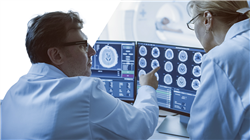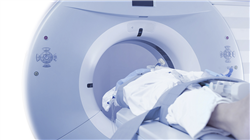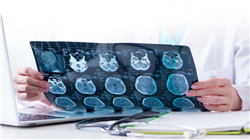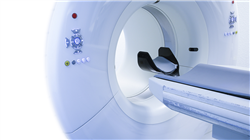University certificate
The world's largest faculty of nursing”
Description
Through this program, supported by Relearning, you will optimize your daily care work and ensure that human bodies are in the right positions for radiological procedures”

Nursing staff play a key role in Forensic Radiodiagnosis, so it is vital that they are familiar with radiographic techniques for the study of Maxillofacial Trauma. In this way, they will provide valuable support to forensic physicians by accurately documenting radiological findings for the subsequent evaluation of injuries and collection of evidence. One of the most relevant imaging tools are X-rays, since they detect the presence, location and extension of bone fractures in the maxillofacial region. This is a fundamental aspect to determine the nature and severity of the injuries. In addition, this instrument is extremely valuable for locating foreign bodies embedded in soft tissues or bones, which can be important for both forensic investigation and reconstruction of events.
In this context, TECH implements a pioneering program in Forensic Radiodiagnosis of Maxillofacial Trauma. The syllabus will provide an exhaustive analysis of maxillofacial anatomy and physiology, to accurately locate anatomical structures in radiographic images. In this same line, the contents will delve into the most common fractures in each part of the face for their correct identification. The syllabus will deepen in the operation of radiographic techniques for the study of Maxillofacial Trauma, such as Computed Axial Tomography. Thanks to this, nurses will improve their daily practice by equipping themselves with the most effective strategies for mobilizing cadavers and ensuring their correct position during radiographic imaging.
This is an intensive program, where professionals will receive a complete update on the processes used in Forensic Radiodiagnosis of Maxillofacial Trauma. All with a syllabus made up of dynamic multimedia resources that include interactive summaries or complementary readings. With the Relearning system, nurses will not have to invest a great amount of hours in the study and will obtain an effective updating process.
TECH's online methodology will allow you, through case studies, to practice in simulated learning environments to qualify you in real clinical situations”
This ##ESTUDIO## in Forensic Radiodiagnosis of Maxillofacial Trauma contains the most complete and up-to-date scientific program on the market. The most important features include:
- The development of practical cases presented by experts in Forensic Radiology
- The graphic, schematic and eminently practical contents with which it is conceived gather scientific and practical information on those disciplines that are indispensable for professional practice
- Practical exercises where the self-assessment process can be carried out to improve learning
- Its special emphasis on innovative methodologies
- Theoretical lessons, questions to the expert, debate forums on controversial topics, and individual reflection assignments
- Content that is accessible from any fixed or portable device with an Internet connection
Do you want to develop new skills for the documentation of radiological findings? Achieve it through this program in only 150 hours”
The program’s teaching staff includes professionals from the sector who contribute their work experience to this specializing program, as well as renowned specialists from leading societies and prestigious universities.
The multimedia content, developed with the latest educational technology, will provide the professional with situated and contextual learning, i.e., a simulated environment that will provide immersive education programmed to learn in real situations.
This program is designed around Problem-Based Learning, whereby the professional must try to solve the different professional practice situations that arise during the course. For this purpose, students will be assisted by an innovative interactive video system created by renowned and experienced experts.
The didactic materials of this program will allow you to deepen in a more visual way in the Radiographic Interpretation of Coronary Fractures"

You will collaborate in the collection and preservation of forensic evidence related to maxillofacial injuries, ensuring the integrity of the radiological findings"
Syllabus
This university program will allow nurses to learn about the different traumas that occur in the maxillofacial massif, as well as their nature and structures involved. The syllabus will analyze the most common injuries in the different areas of the face, in order to enable their recognition. In this line, the didactic contents will delve into the use of the most avant-garde radiographic techniques for the study of maxillofacial traumas within the forensic context, among which X-rays stand out. In this way, professionals will improve their usual practice and will correctly position the human bodies for radiological procedures.

You will be up to date with the most avant-garde radiographic techniques for the study of Alveolodental Trauma”
Module 1. Forensic Radiodiagnosis of Maxillofacial Trauma
1.1. Forensic Maxillofacial Trauma: Fractures of the Upper Third of the Face
1.1.1. Fractures of the Frontal Bone
1.1.2. Fractures of the Walls of the Frontal Sinuses
1.1.3. Fractures of the Temporal/Parietal Bone
1.2. Forensic Maxillofacial Trauma: Fractures of the Middle Third of the Face
1.2.1. Nasal Fractures
1.2.2. Orbital Fractures
1.2.3. Fractures of the Naso-Orbito-Ethmoidal Complex
1.2.4. Fractures of the Zygomatic Bone
1.3. Forensic Maxillofacial Trauma: Fractures of the Lower Third of the Face.
1.3.1. Fracture of the Mandibular Symphysis / Parasymphysis
1.3.2. Fracture of the Mandibular Body
1.3.3. Mandibular Angle Fracture
1.3.4. Mandibular Ramus Fracture
1.3.5. Fracture of the Mandibular Condyle
1.4. Forensic Maxillofacial Trauma: Le Fort Fractures
1.4.1. Le Fort I Fractures
1.4.2. Le Fort II Fractures
1.4.3. Le Fort III Fractures
1.4.4. Le Fort IV Fractures
1.5. Forensic Maxillofacial Trauma: Alveolodental Fractures
1.5.1. Coronary Fracture
1.5.2. Corono-Radicular Fracture
1.5.3. Root Fracture
1.5.4. Alveolar Fracture
1.5.5. Avulsion
1.6. Radiographic Techniques for the Study of Maxillofacial Trauma in the Forensic Context.
1.6.1. X-Ray
1.6.2. Computerized Axial Tomography
1.6.3. Other Radiographic Techniques
1.7. Radiographic Techniques for the Study of Alveolar Tooth Trauma in the Forensic Context
1.7.1. X-Ray
1.7.2. Computerized Axial Tomography
1.7.3. Other Radiological Techniques
1.8. Radiographic Interpretation of Maxillofacial Trauma in the Forensic Context: Isolated Fractures.
1.8.1. Radiographic Interpretation of Trauma to the Upper Third of the Face
1.8.2. Radiographic Interpretation of Trauma of the Middle Third of the Face
1.8.3. Radiographic Interpretation of Trauma of the Lower Third of the Face
1.9. Radiographic Interpretation of Maxillofacial Trauma Within the Forensic Context Le Fort Fractures
1.9.1. Radiographic Interpretation in Le Fort I Fractures
1.9.2. Radiographic Interpretation in Le Fort II Fractures
1.9.3. Radiographic Interpretation in Le Fort III Fractures
1.9.4. Radiographic Interpretation in Le Fort IV Fractures
1.10. Radiographic Techniques for the Study of Alveolar Tooth Trauma in the Forensic Context
1.10.1. Coronary Fracture
1.10.2. Corono-Radicular Fracture
1.10.3. Alveolar Fracture
1.10.4. Root Fracture
1.10.5. Avulsion

You will be able to access the Virtual Campus at any time and download the contents to view them whenever you want. Enroll now!”
Postgraduate Certificate in Forensic Radiodiagnosis of Maxillofacial Trauma
Immerse yourself in the exciting field of forensic radiodiagnosis focused on maxillofacial trauma with the Postgraduate Certificate created by TECH Global University. This program, taught in 100% online mode, will provide you with specialized training in the interpretation of radiological images to identify and analyze injuries in the maxillofacial region, contributing to the clarification of forensic cases and the administration of justice. Here, you will explore the fundamentals of forensic radiodiagnosis. You will learn about the basic principles of radiography, computed tomography (CT) and magnetic resonance imaging (MRI) applied to the study of trauma in the maxillofacial region, and understand how these techniques can reveal crucial details in forensic investigations. In this way, you will develop specialized skills in radiology applied to maxillofacial trauma and make a difference in the administration of justice.
Get a degree in Forensic Radiodiagnosis of Maxillofacial Trauma
In this innovative program, you will learn how to recognize fractures, dislocations, contusions and other types of injuries to bones, teeth and soft tissues by using radiologic imaging to interpret findings and determine the nature and extent of injuries. You will explore how dental radiographs and cone beam tomography (CBCT) scans can reveal fractures, avulsions, periapical injuries and other dental anomalies that can be crucial in identifying individuals and reconstructing traumatic events. You will also become familiar with advanced imaging techniques applied to maxillofacial trauma. You will learn about the latest innovations in medical imaging equipment such as cone beam tomography (CBCT) and optical coherence tomography (OCT), and how these technologies complement traditional radiology in complex forensic cases. Finally, you will learn how to identify and document maxillofacial injuries using radiological imaging. In this way, you will be prepared to tackle complex cases and contribute significantly to the resolution of forensic investigations. Enroll now and advance your career!







